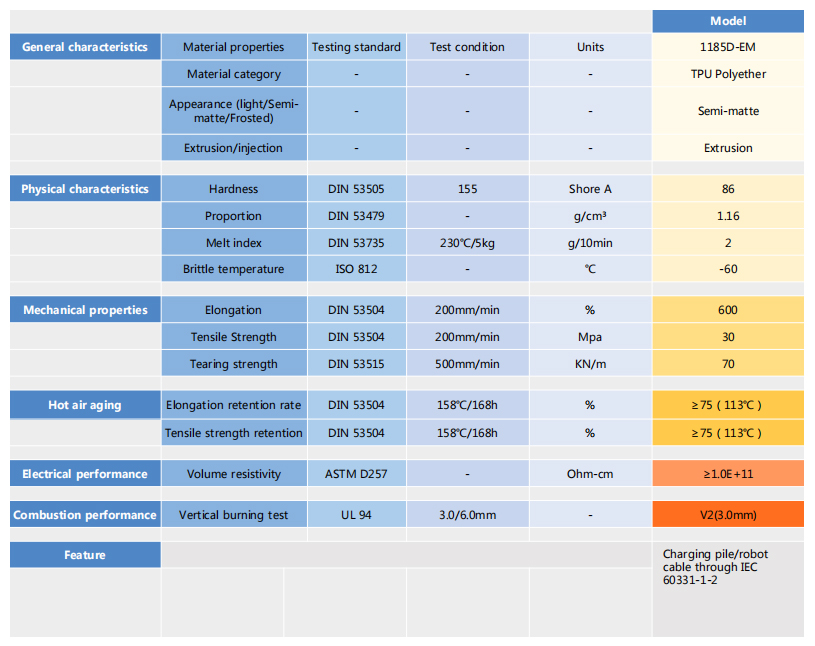1. Fully meet the testing requirements of robot control cables through UL, VDE, TüV, CIAR, and other standards;
2. High-temperature resistance:
one of a very few halogen-free flame retardant thermoplastic polyurethane for sale that supports cable passing UL758/1581 105℃ temperature resistance grade test (136 /168Hrs);
3. High mechanical properties:
pass through ≥ 50000 wear-resistant tests, effectively avoid cable wearing and cracking in use; excellent tensile strength (≥ 18Mpa) tear strength (≥40N) and modulus of elasticity, support the wire going through torsion resistance, bending resistance, and flexion resistance tests;
4. Good dynamic mechanical properties:
fully meet the TüV 1-5 level mechanical performance requirements.
5. Better environmental performance:
Oil Resistance:
Supporting the cable to pass70℃/24h oil resistance test, the change rate of strength and elongation is no more than 30%;
Hydrolysis resistance:
Supporting the cable to pass hydrolysis resistance test at 80℃/168h, strength change rate is less than 30%, elongation change rate is less than 35%; or 1000Hrs hydrolysis resistance test (85℃/85% RH, 1000Hrs);
Acid and Alkali Resistance:
Supporting the cable to pass the acid and alkali resistance test at 23℃/168h, the strength change rate is no more than 30%, and the elongation rate is no less than 100%.

The introduction of elastomer functional groups in PVC resin greatly improves the comprehensive properties of PVC materials. Compared with normal PVC materials, it has obvious advantages as follows:
1. Supporting cables pass UL758/1581 VW-1 combustion test;
2. High elasticity:
take account of soft-touch and higher Modulus of elasticity;
3. Good dynamic mechanical performance:
fully meet the TüV 1-5 level mechanical performance requirements;
4. Excellent environmental resistance:
Oil Resistance:
pass 70℃/24Hrs oil resistance test, the change rate of strength and elongation is no more than 30%.
Hydrolysis resistance:
pass hydrolysis resistance test at 80℃/168Hrs, strength change rate is no more than 30%, the elongation change rate is no more than 35%.
